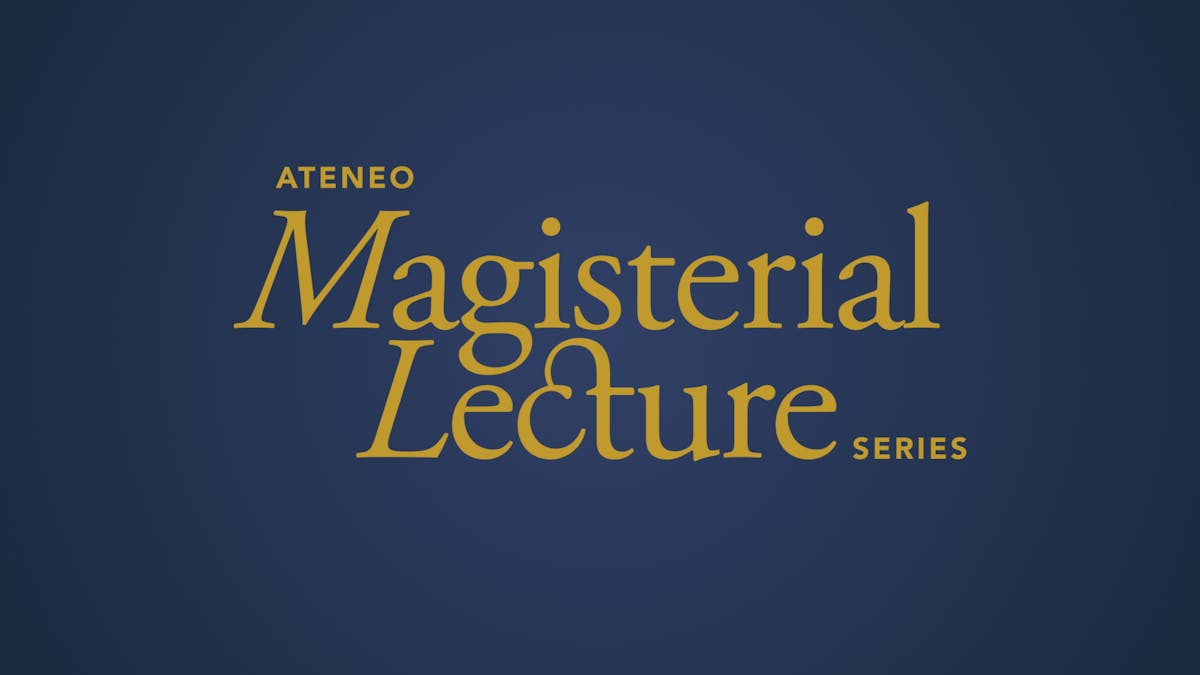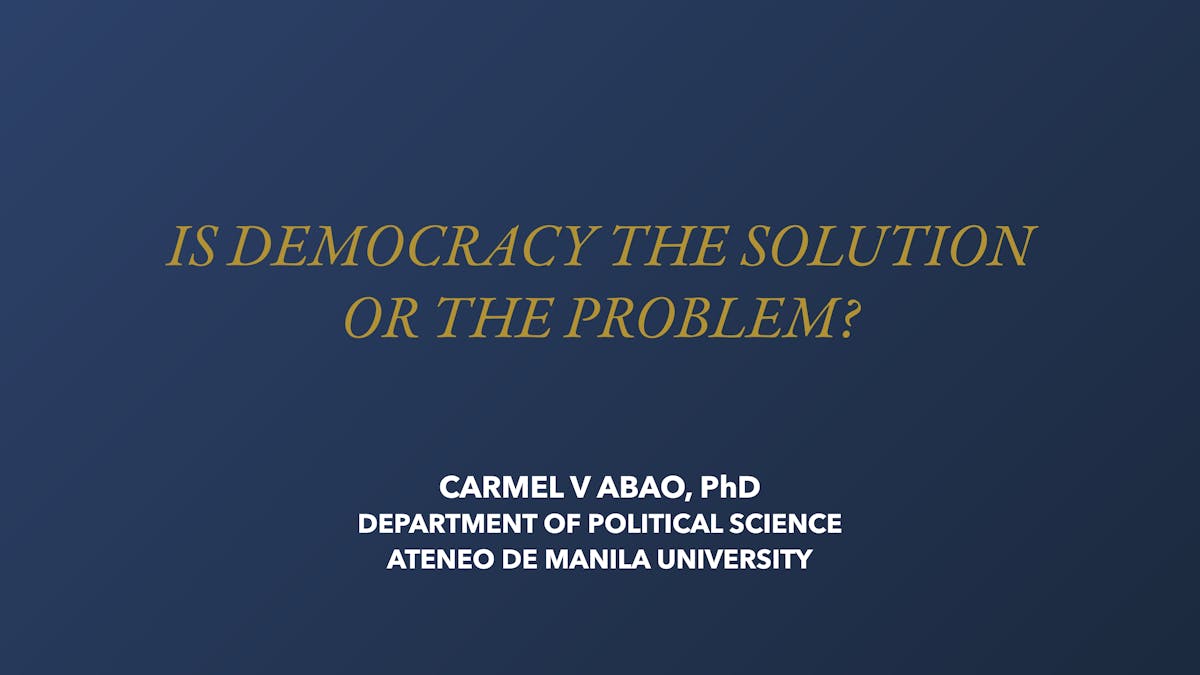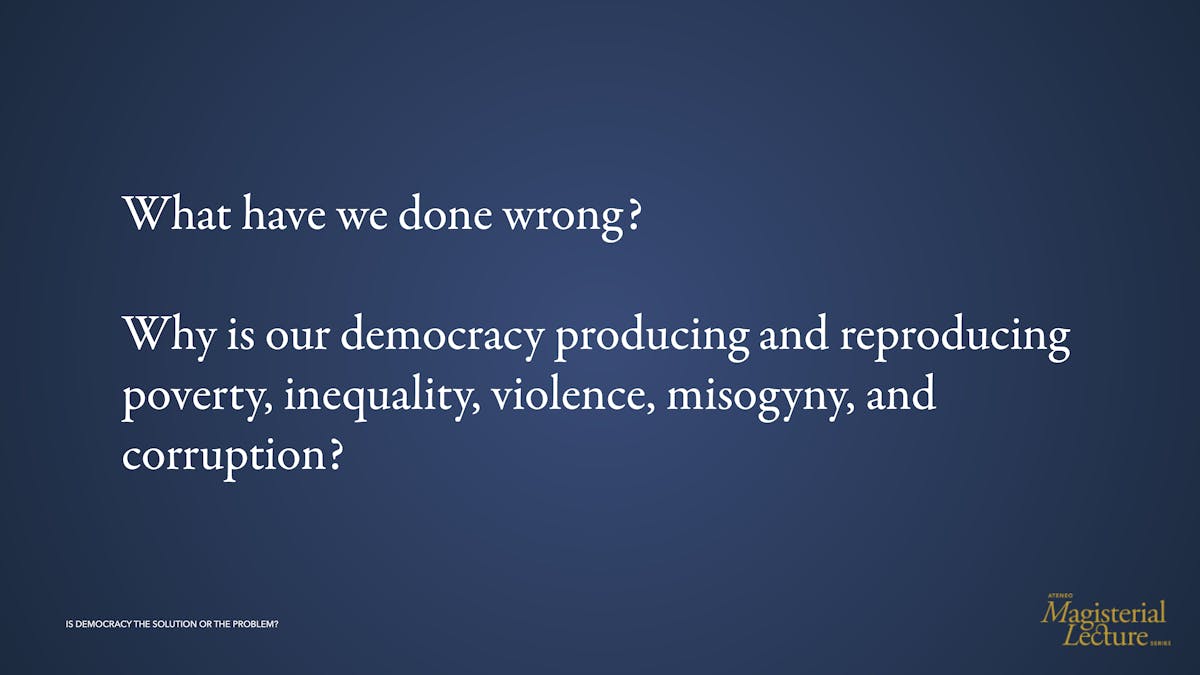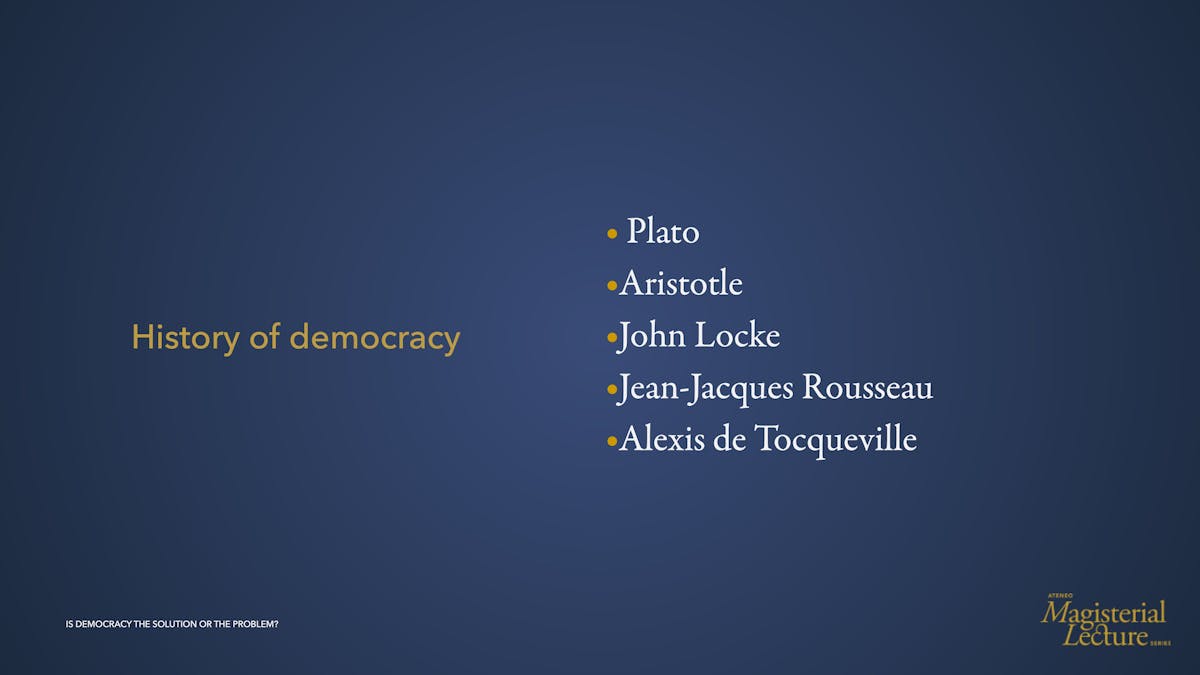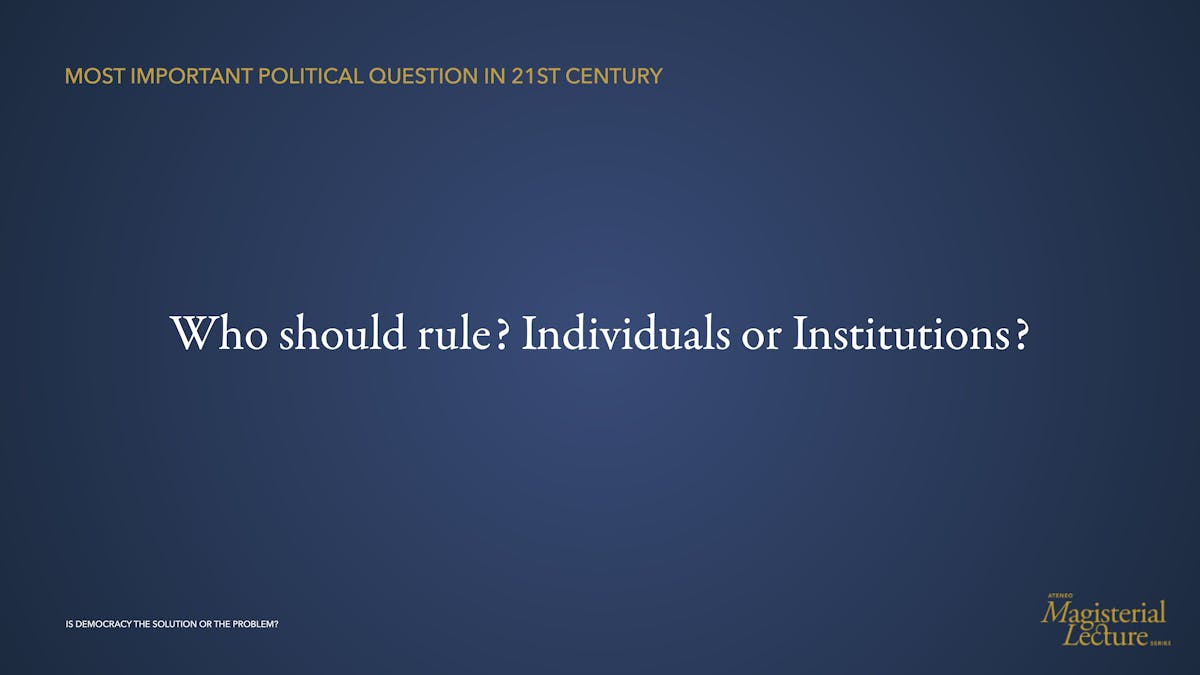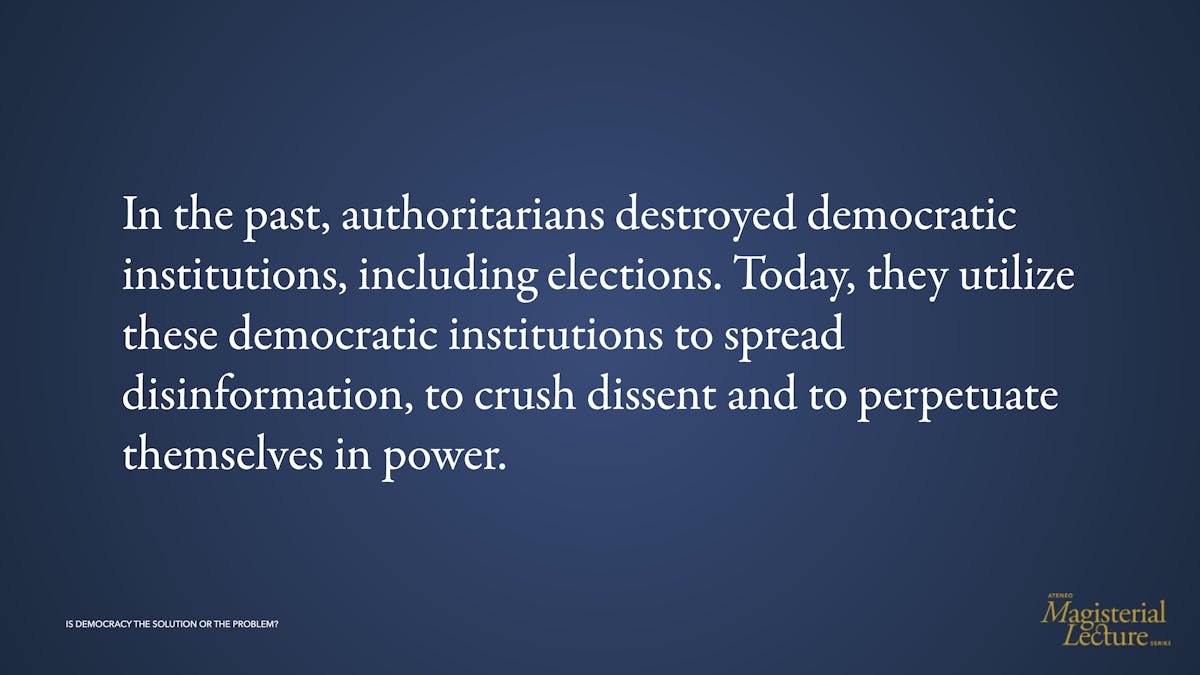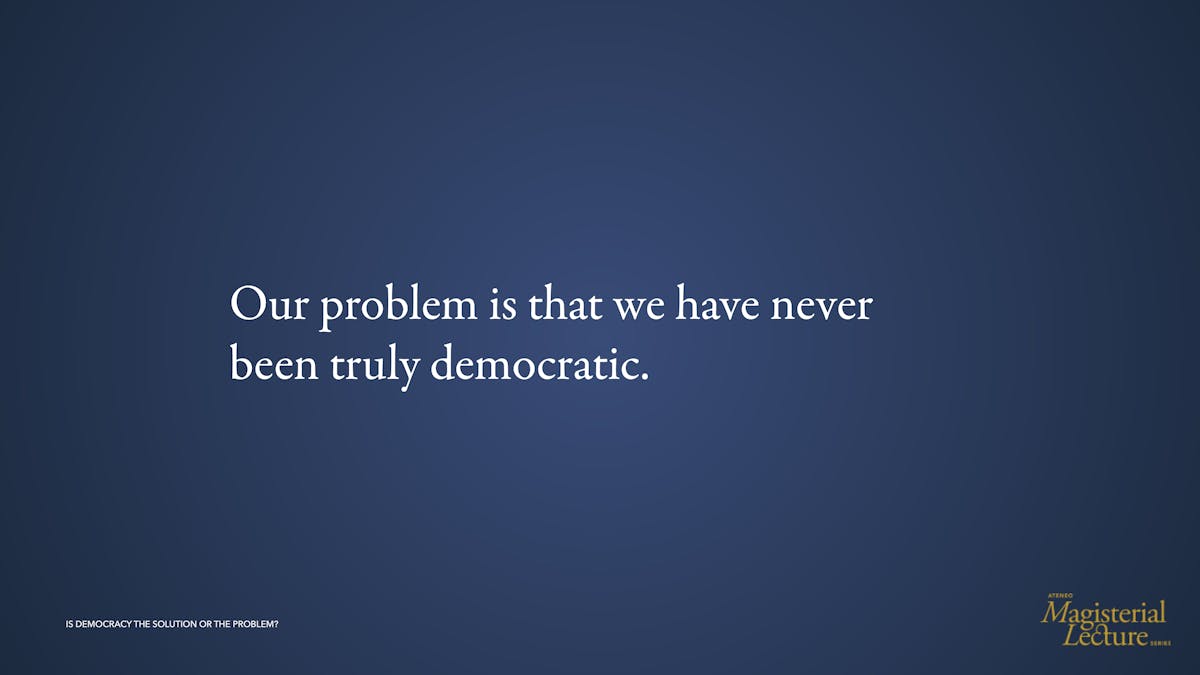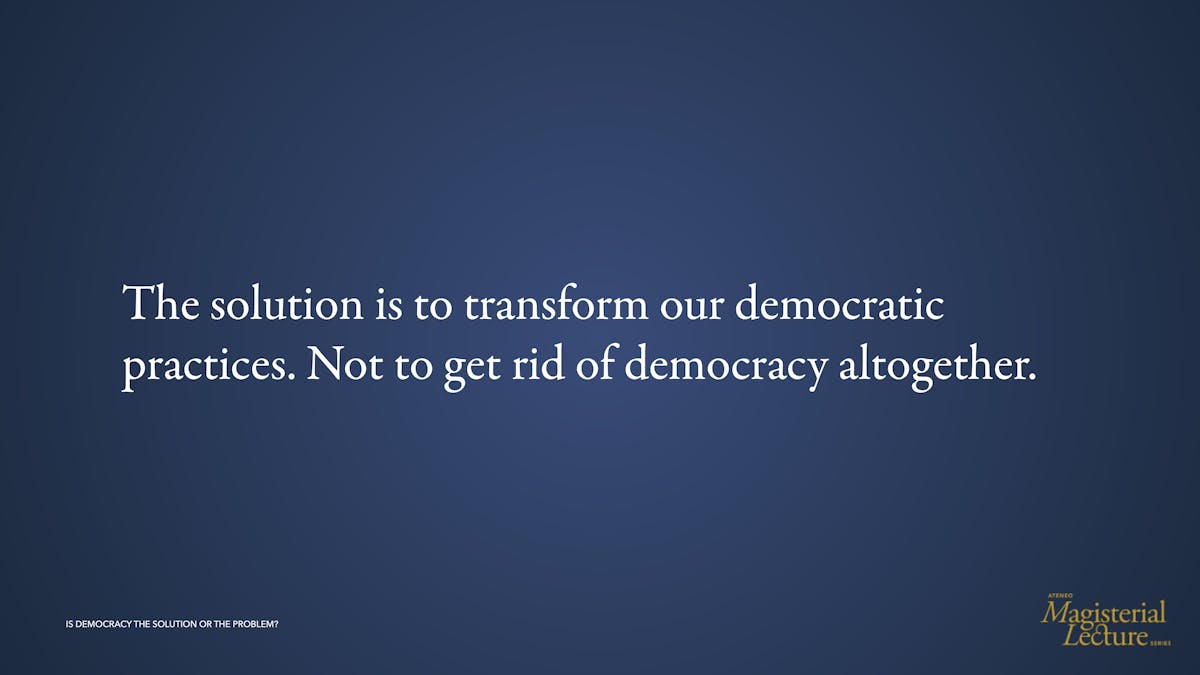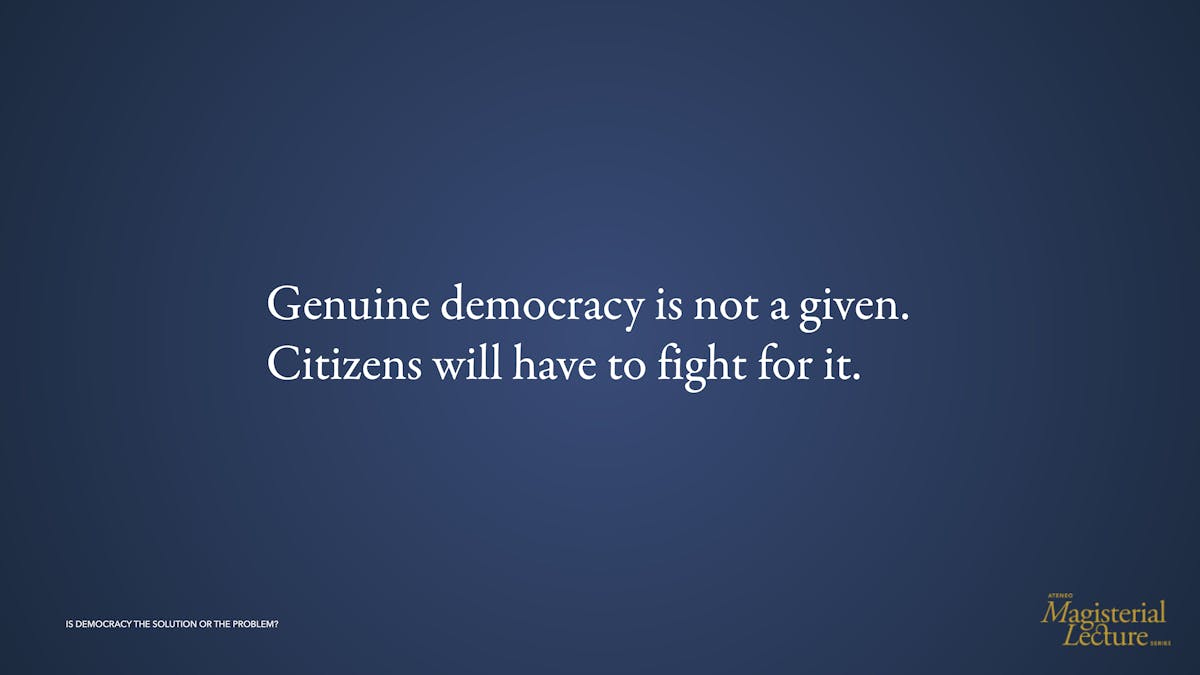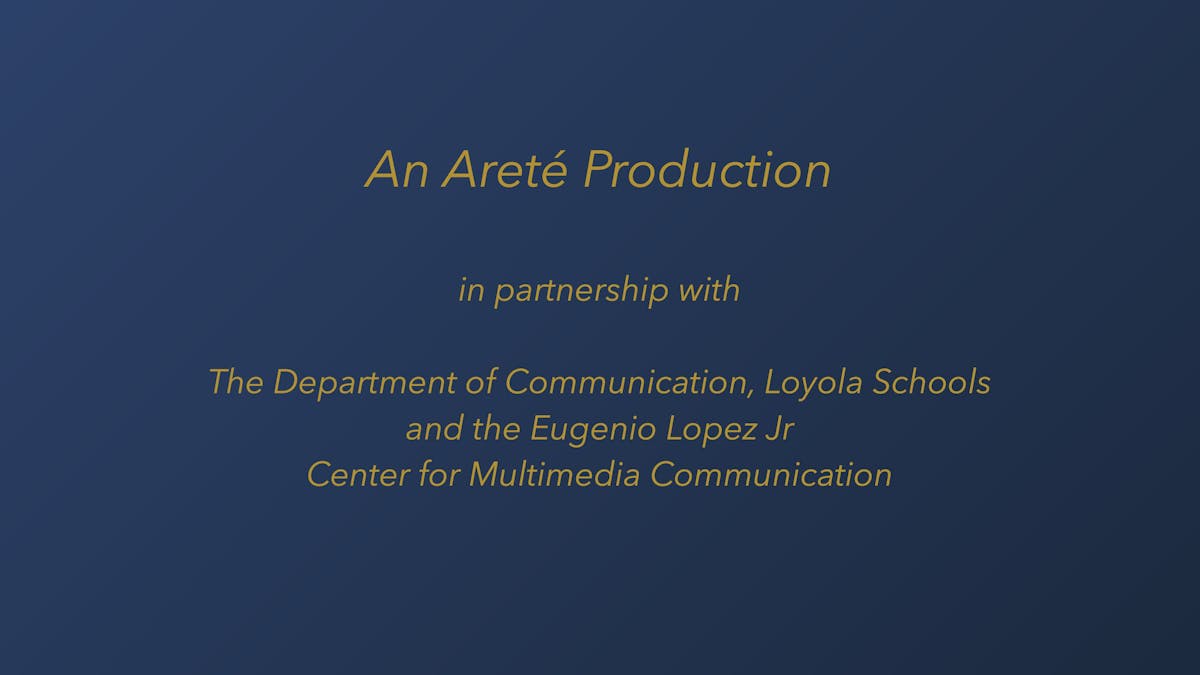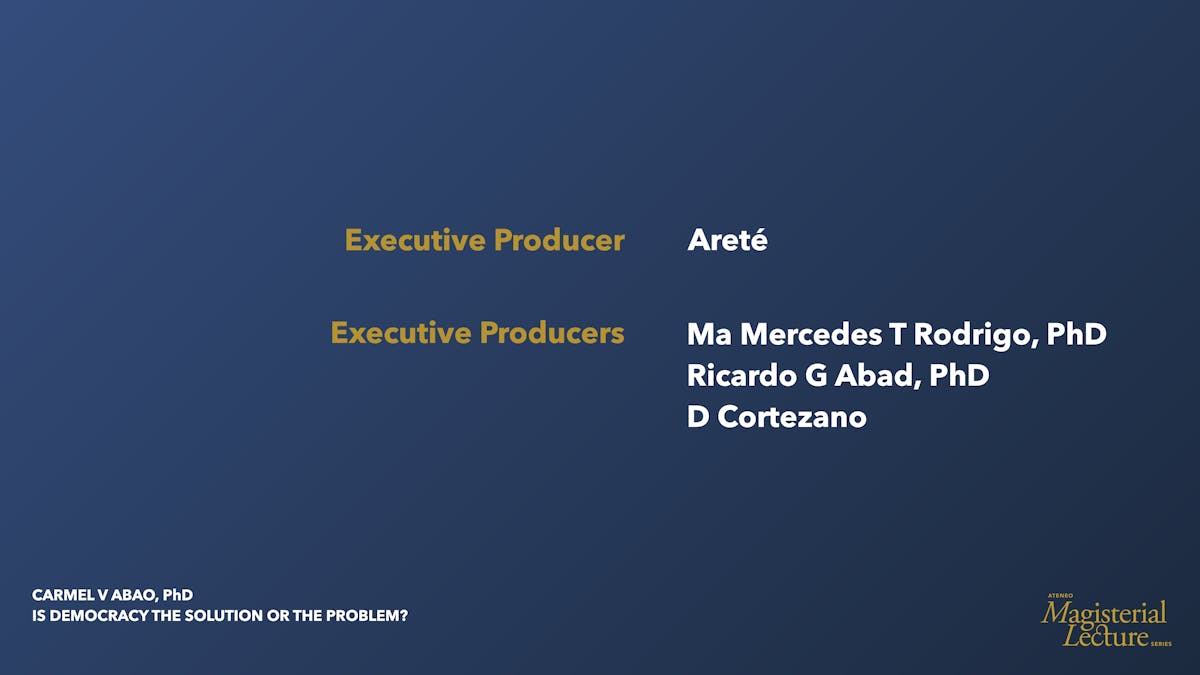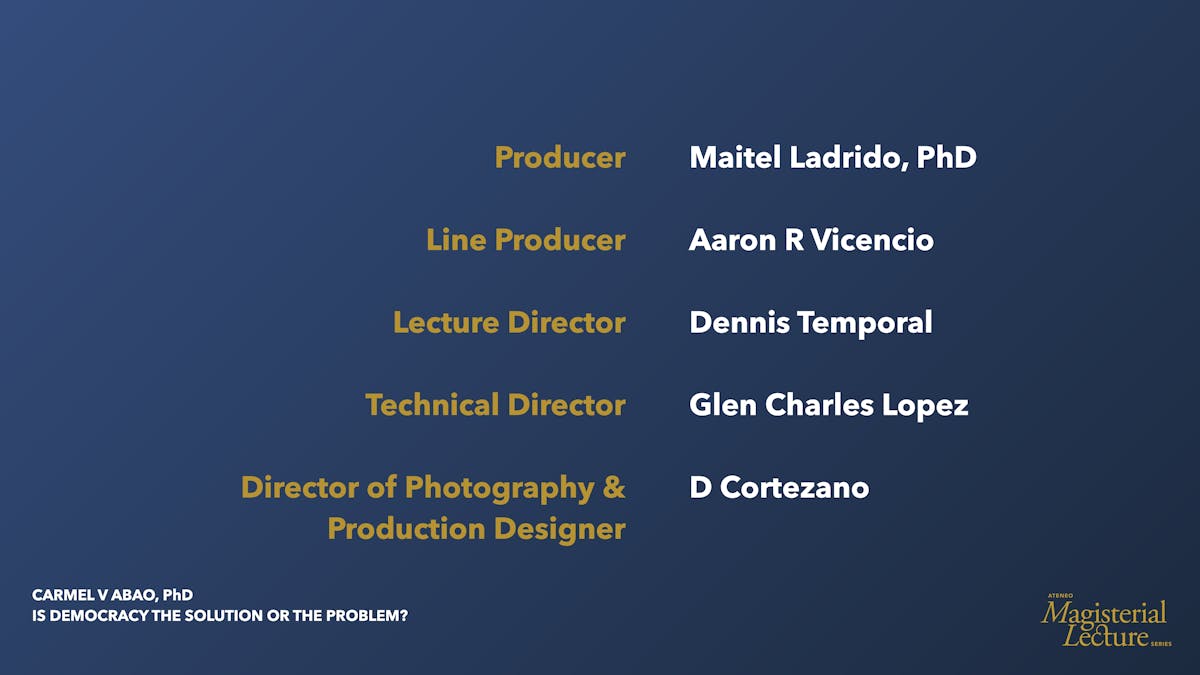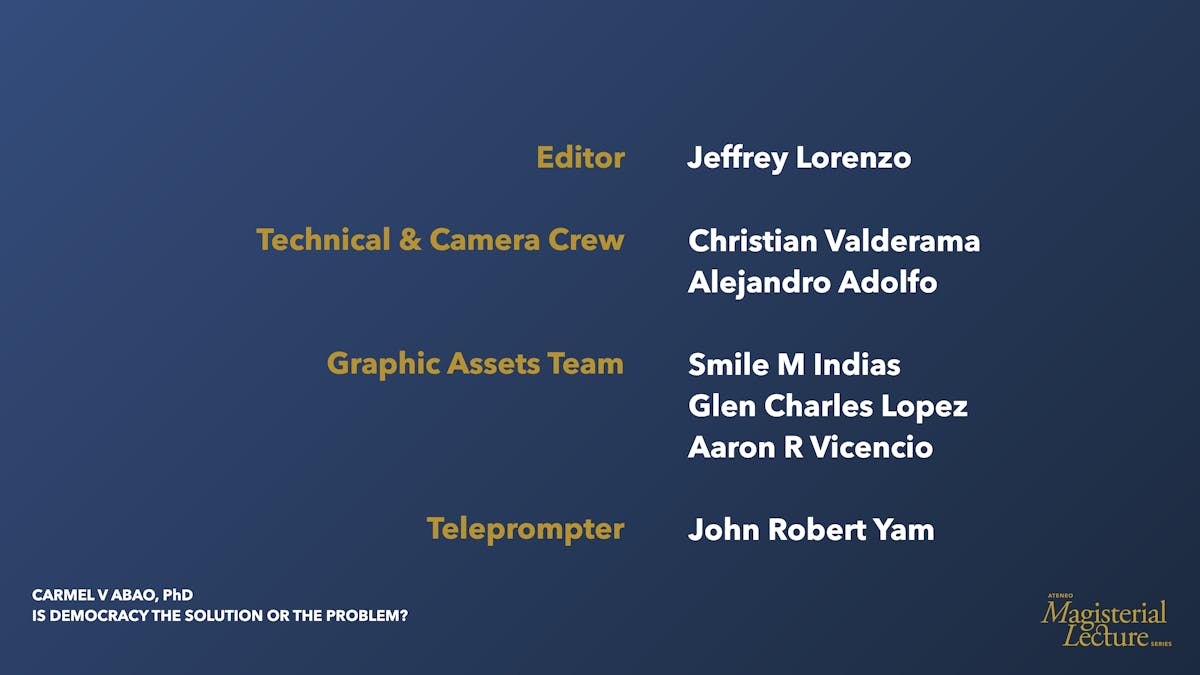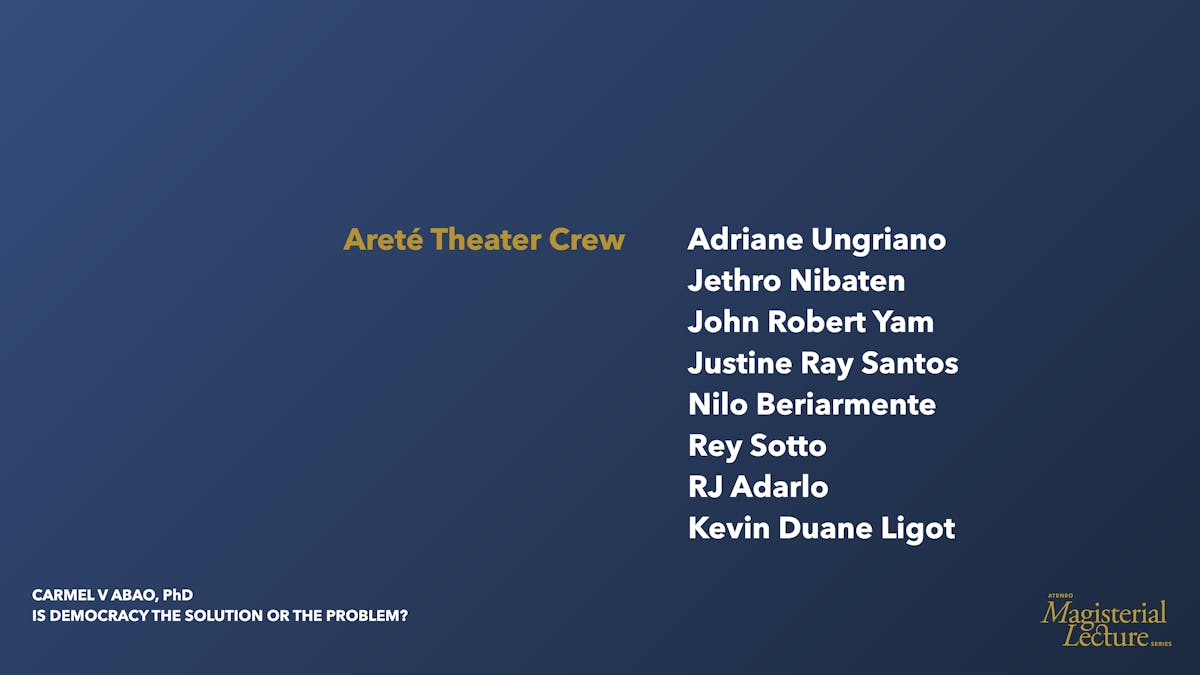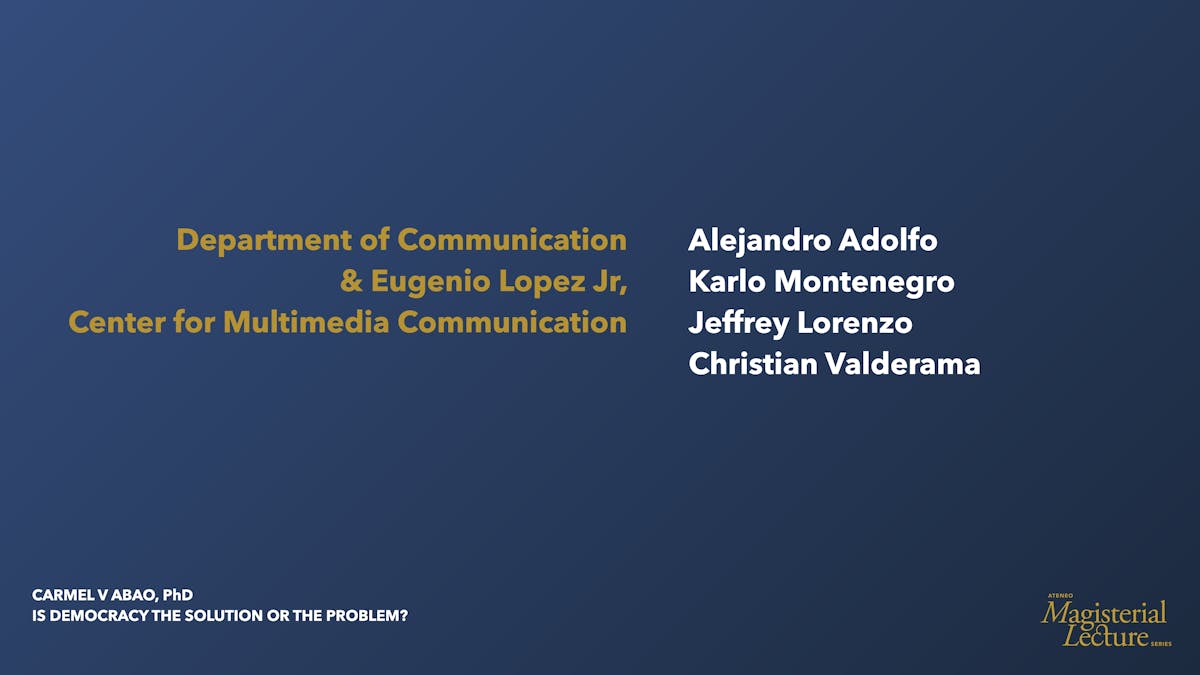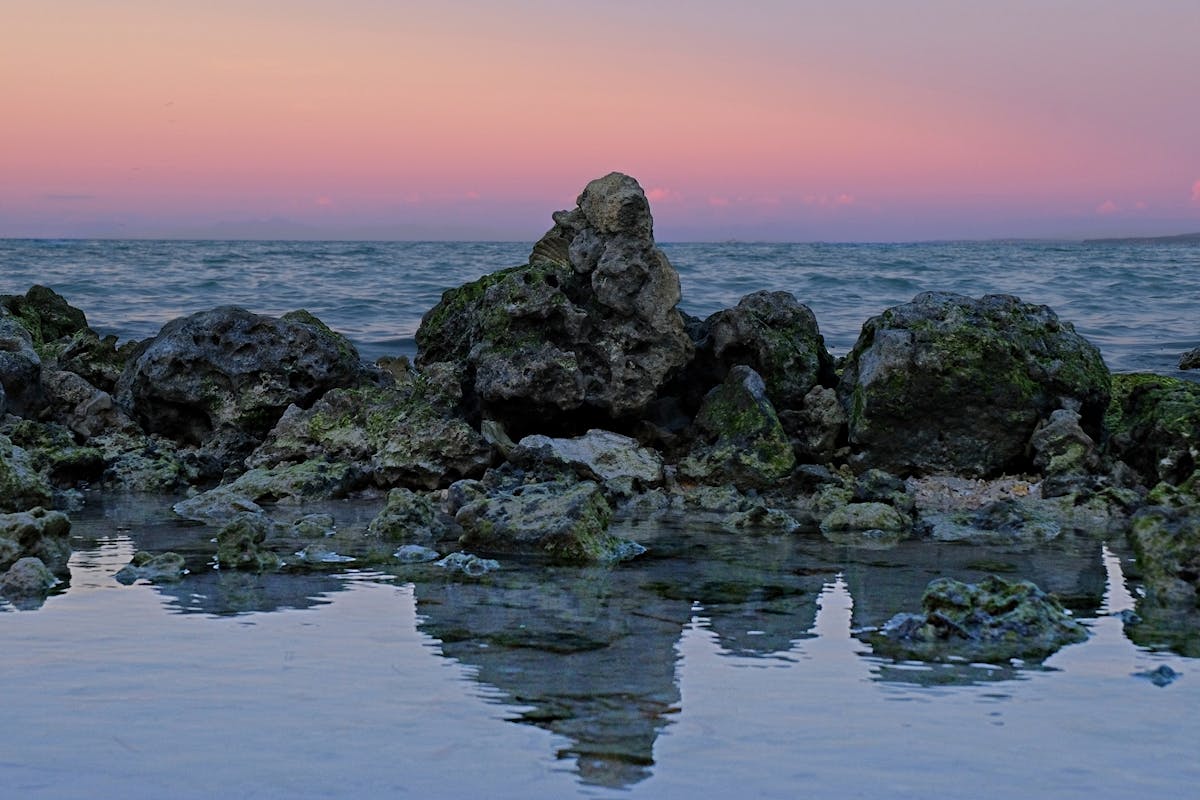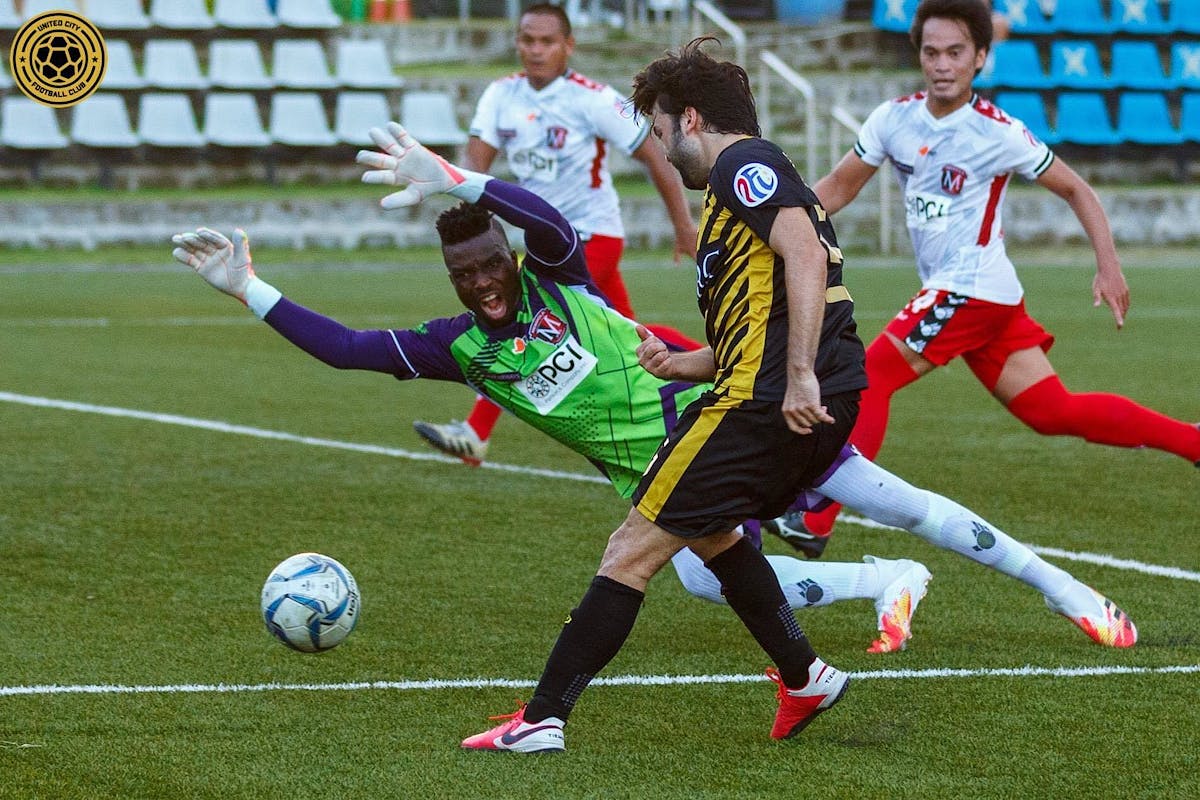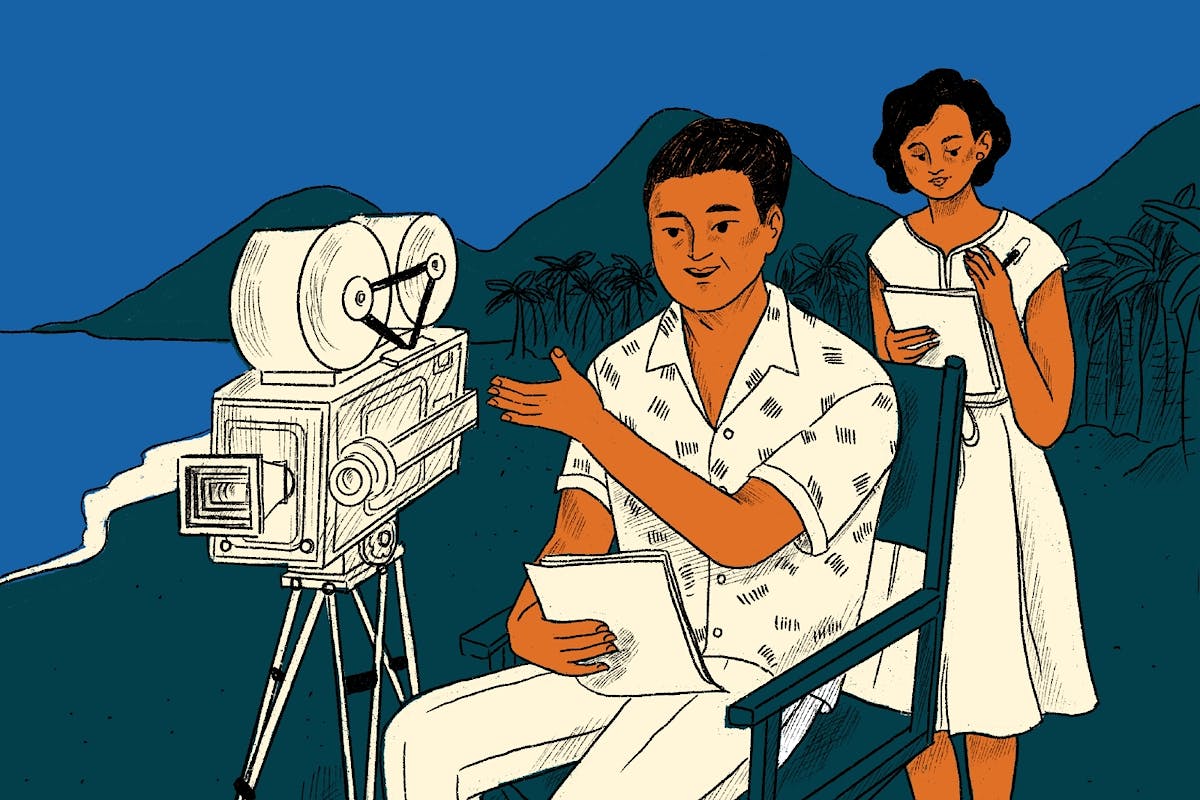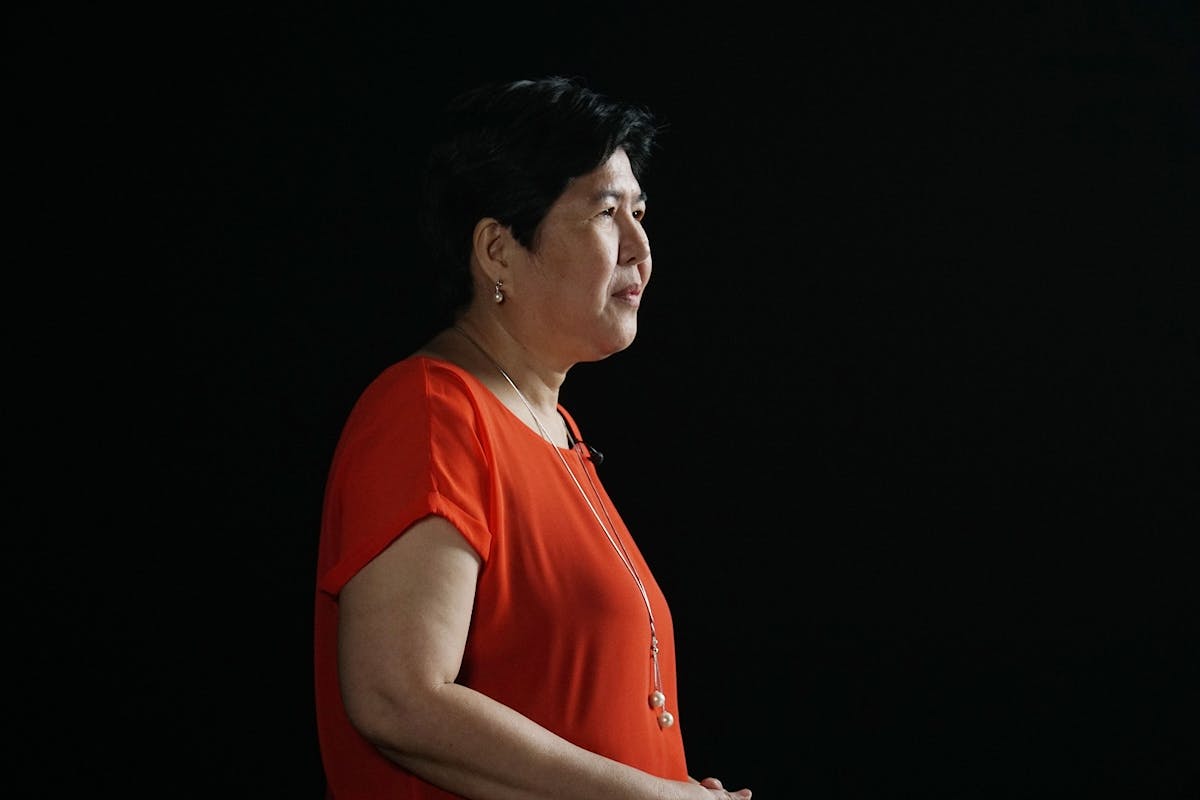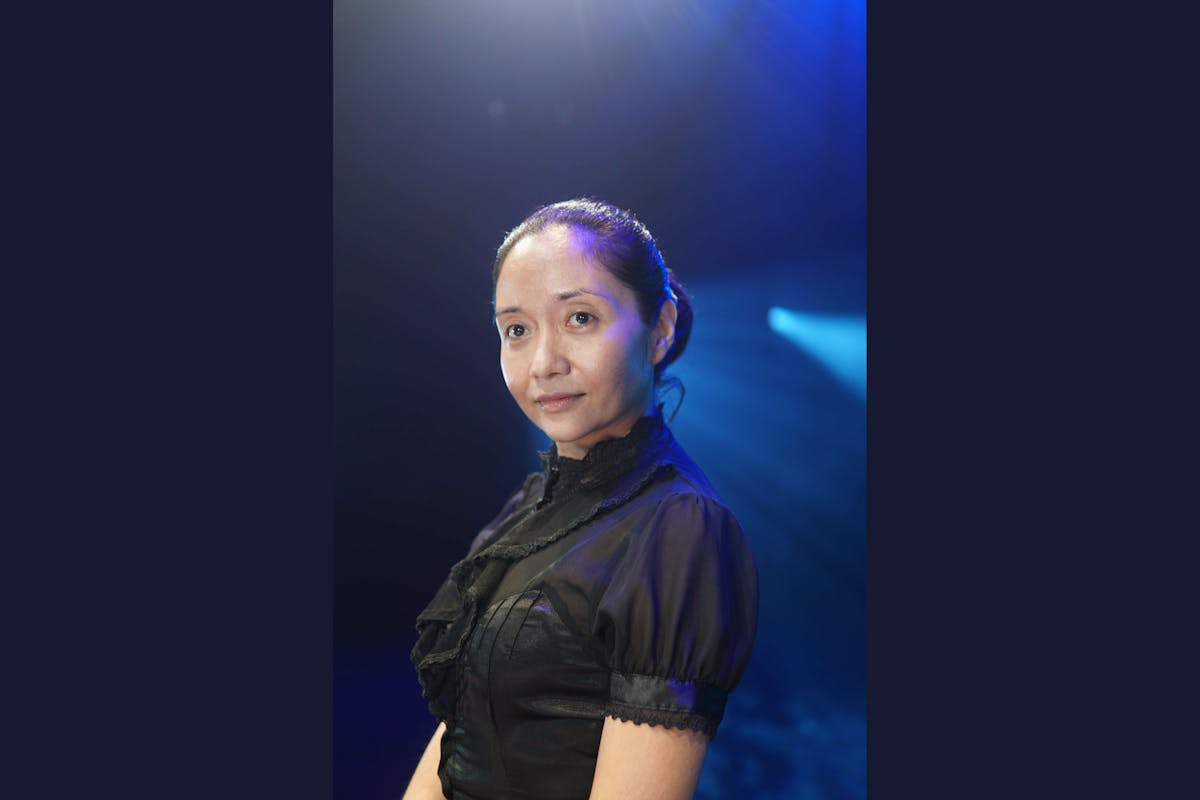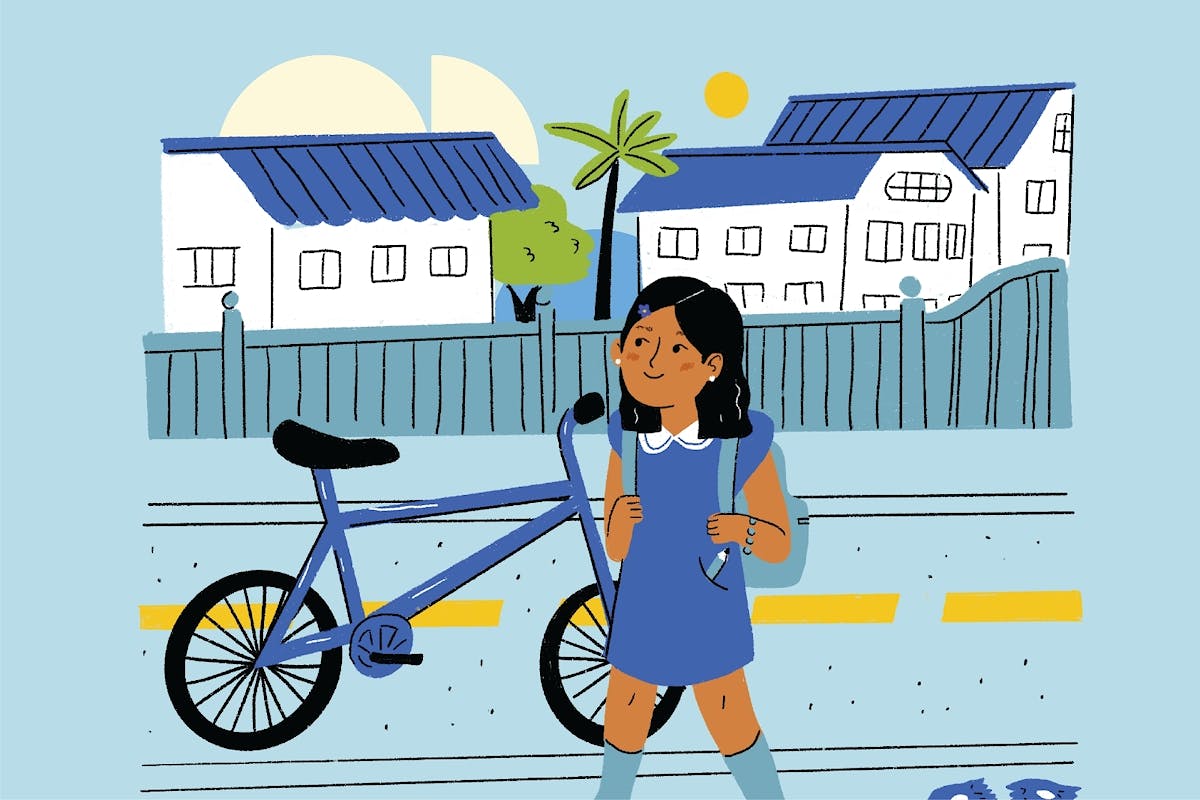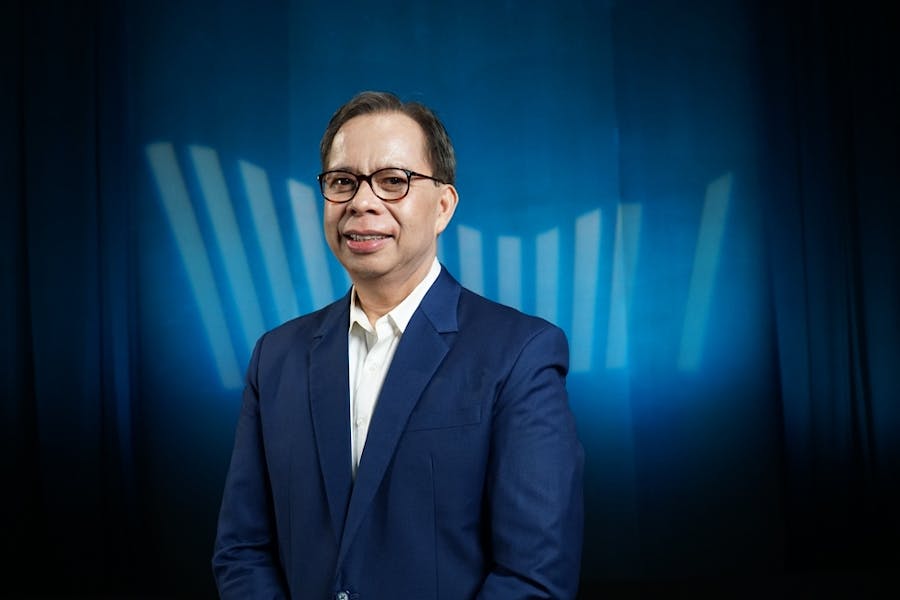
Our Way Forward
Democracy in Practice
While watching the livestream video of the Ateneo de Manila Sanggunian Central Assembly Special Session to deliberate on the proposed students’ strike, I couldn’t help but be emotional.
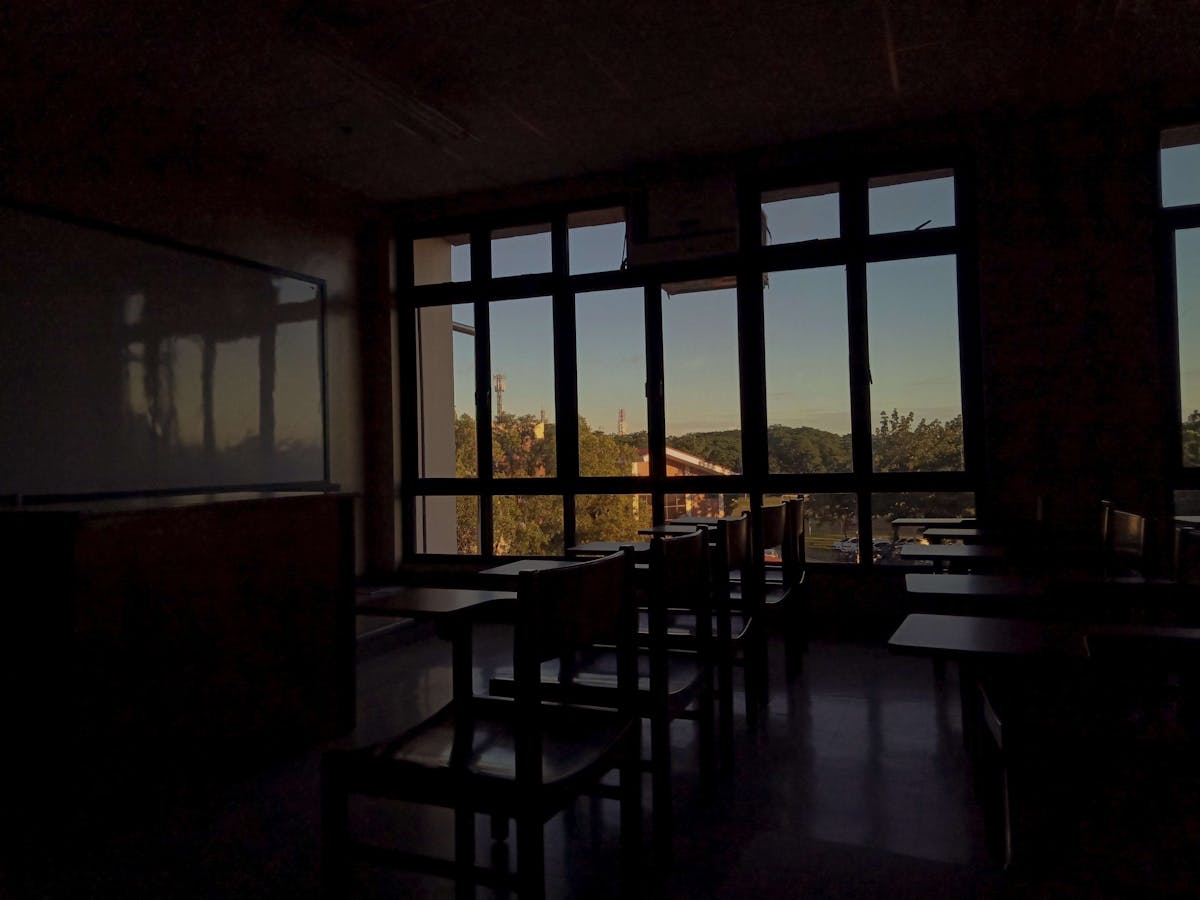
While watching the livestream video of the Ateneo de Manila Sanggunian Central Assembly Special Session to deliberate on the proposed students’ strike, I couldn’t help but be emotional. The student representatives were all so eloquent and authentic in delivering their speeches, I could almost feel their anguish over divisions within their constituencies or the conflicted situation of students agreeing with the purpose of the strike but not its mechanics.
Truth to tell, I watched the video of each and every Sanggunian Central Assembly deliberation, from their Emergency sessions on November 14 and 15, 2020 to their Special Session on November 17, 2020. I also watched the Sanggunian President’s address to the student body and read each and every statement released by the strike petitioners, the students, the faculty, the alumni and the university administration.
All the exchanges and statements, especially those by the striking students and the Sanggunian student representatives, left me in awe. I couldn’t help but feel proud to be part of the Ateneo community as an educator (and an educator on political science, at that!): these students were actually doing a better job at decision-making than the Philippine Congress!
To me, that November 17 Sanggunian deliberation on the strike petition was not just a damned-if-you-do-damned-if-you-don’t kind of situation. It was democracy in practice -- a microcosm of the larger democracy that we live in. As such, it should prod all of us to ask questions and form opinions about youth activism and about democracy itself, especially within the context of a visibly threatened Philippine democracy under the Duterte regime.
Here are some of my thoughts and questions on activism and democracy, as triggered by recent student-led protests.
Despite the polarizing nature of the issue at hand and the emotionally-charged decision-making process, the student representatives at that Sanggunian deliberation were able to maintain an atmosphere of respect and kindness. More than the content of their discourse (which were all valid), it was the manner of their discourse that rendered all of them impressive – presiding officers, petitioners, supporters, oppositors, and ‘everyone-in-between’ (to borrow the term of one of the student reps).
I was reminded, in fact, that it was this manner of discourse that President Duterte drastically changed when he took office in 2016. Instead of promoting respectful discourse, the President normalized vulgar, sexist language and vicious political exchanges. This has been part of his populist strategy -- to speak and act like “the people”. It is also part of that populist narrative that only the elite can afford to be kind and respectful and that therefore to be genuinely “of the people”, President Duterte and by extension, political discourse, has to be vulgar, sexist, and vicious.
Populism thus is also about appropriating and controlling people’s notion of “the people” – for one’s own political advantage or personal gain. President Duterte could have depicted “the people” by describing how the majority of Filipinos live – hungry and malnourished, unable to attend school, unemployed or underemployed or working overseas, homeless, vulnerable to disasters and without access to healthcare – and that would have already provided his rhetoric with an anti-elite frame. But no, he chose to depict the people as vulgar, sexist and vicious. Why? Because that narrative and that manner of discourse gives him space to leave the problems of the people unaddressed and to leave the elite challenged in rhetoric but not in real life -- all while still “embodying” “the people”.
That political moment of respectful deliberations among the Ateneo students was, in itself, a challenge to President Duterte’s populist narrative. It showed that even difficult political questions can be resolved without political actors turning vicious towards each other.
The social media exchanges before, during and after the student deliberations on the strike were a different story. Interestingly enough, the content of the discourse on Facebook and Twitter was the same (i.e support, opposition, in-between) but the manner was very different. There were harsher words and very little kindness.
I am not social media-savvy but I accept that political discourse, to a very great extent, takes place on social media. Even Tiktok now seems to be a place where young people get their political education. We can influence the content of political discourse on these platforms but how do we influence the manner of discourse? Or can we? Can we make the discourse healthier, more respectful or do we really just have to live with ruthless social media exchanges? These questions are important also in relation to President Duterte’s populist strategy of controlling the manner of political discourse. How, for example, can we stop the spread of President Duterte’s sexism when the manner of discourse in platforms where we discuss his sexism is, by and of itself, sexist?
Perhaps even without intending to, the Ateneo Sanggunian processes reflected the limits and possibilities of representative democracy.
Representation needs mechanisms by which representatives can genuinely gauge the sentiments of their constituencies. In the Sanggunian case, this meant constituency checks through online polls. In the larger Philippine case, there are no such visible feedback or accountability mechanisms between representatives and constituents. When Congress representatives vote on bills, they actually do not bring with them any proof that they have consulted their constituencies. The public is simply asked to assume that these representatives are democratic vis-à-vis their constituencies. Especially in the absence of real political parties, nobody really compels Filipino “representatives” to gauge their constituencies’ sentiments in a systematic or palpable way.
In addition to exhibiting the importance of constituency-informed and transparent decision-making processes, I think the Sanggunian deliberations also revealed that “who decides” and “who sits at the table” should always be an open discussion. The fact that the strikers had to forward their petition to the Sanggunian shows that not everyone gets to have a seat at the table. For democracy to be meaningful, formal representative bodies must acknowledge this gap even as they insist that those already at the table respect pre-existing rules.
Therein lies the limits and possibilities of representative democracy. Representation works and lends stability to the democratic set-up because everyone seated at the table knows exactly how issues will be resolved and everyone accepts that each one has a right to be at that table. The problem is, however, not everyone gets to sit at the decision-making table. This is where non-institutional politics comes into the picture.
The interplay of institutional and non-institutional politics was clearly on display in the Ateneo episode. The Sanggunian was quite insistent on compliance with agreed upon rules of decision-making, including the right of the strikers to present their petition during the formal Sanggunian decision-making process. When the decision turned out not favorable to them, the petitioners also became insistent on proceeding with the strike.
For the petitioners, the strike was to go on despite the rejection of the Sanggunian. This is exactly what non-institutional politics is all about: not everything has to have the imprimatur of formal institutions. These students thus were not really waging a revolution or overthrowing the Ateneo Sanggunian or the university administration. They were just exercising their democratic right to create non-institutional spaces for political participation.
On the larger scale, this dynamic of institutional and non-institutional politics is also very much at play. All the controversial laws – like the anti-terrorism law or the ABSCBN shutdown – were deemed legitimate because they went through Congress deliberation. Such legitimacy, however, did not deter advocates of human rights and democratic freedoms to continue protests against the enactment of such laws.
In other words, in a meaningful democracy, dissent can and must continue even when formal decisions have already been made. Activism can be best understood and appreciated if viewed as part of non-formal or non-institutional politics.
Instead of asking about “how to stop these kids” (they’re no longer “kids”, by the way), I think we should all focus on the claims and purposes that these activists are presenting to the public. Do we agree with these claims and purposes? If yes, do we have suggestions on how these purposes can be best achieved? If we do not agree, we should also still be engaging them: what then should their claims and purposes be?
Activism can’t be tamed because it operates more in the realm of non-institutional politics. It is about challenging the status quo and about banging (loudly!) at both government’s and society’s doors. It is meant to push people to see the contradictions between the “what is” and the “what should be”.
While activism can be best understood as part of non-institutional politics, the ethos of activism can actually be exercised even in institutional politics. Banging at government’s door can also be done from within government although the repertoire of actions outside of government is at times greater -- because these actions are less encumbered by formal rules and institutions. Thus, where there is resistance to the status quo, there is activism. There can be activist students, activist teachers, activist administrators, activist professionals, activist artists, activist entrepreneurs and yes, even activist bureaucrats and activist politicians. Activism can thrive and flourish through multiple forms of resistance, within and beyond institutional borders.
This is why many are not comfortable with activism. It is disruptive and pushes everyone to get out of their comfort zones and thought bubbles. And there are real costs to activism. In highly repressive political regimes, activists often have to give up life and limb. During the Marcos dictatorship, for example, we lost so many youth activists. Of late, young activists are again being threatened and tagged as reds or terrorists. More than anything, the young activists of today need protection and the assurance that they can hold government accountable without meeting the same fates as those of brilliant student activists during the Marcos years like Edgar Jopson, Emmanuel Lacaba, Liliosa Hilao and Maria Lorena Barros. We need to build a society where activists need not be villified, or worse, murdered, for their political convictions and actions.
But it is exactly for this same reason -- disruption -- that activism is so powerful as a means of transforming society. Institutions and binding rules of governance serve primarily to normalize certain political behavior (including bad behavior!) and this normalization always means preservation rather than change. Without activism, people will simply be content with living with the “what is”. The youth activism that we see today in Ateneo and other universities here and abroad is actually a signal of positive change. It is a reminder that disruption, not just stability, can carry a transformative societal purpose.
This is not to say, however, that activists should not be engaged. In this case, for example, activists need to be engaged on how best to deal with a government that is authoritarian populist. This kind of government is very legitimate and has the support of “the people”. How then can activists convince “the people” – in this particular case, those who have fallen victim to either the pandemic or the typhoons – that democracy is required to solve their problems and ease their suffering? How can activists convince people who do not have food on the table or clothes on their backs or roofs above their heads that democracy matters? That question is of utmost importance because President Duterte has already convinced “the people” that democracy does not matter at all in resolving society’s problems. How then can activists counter such a powerful political narrative. Because really, when you’re hungry and homeless, are you even going to bother with democracy?
Secretary Harry Roque is wrong. This episode in Ateneo is not just about students failing or passing as a consequence of going on strike. This is actually about the right of the young to also teach and not just be taught, to lead and not merely follow. These are students, not sheep. More importantly, they are student leaders and they are leading with their ideological and political ideas, their passion and commitment for change, and, on top of that, they are armed with very advanced digital communication skills and mechanisms.
President Duterte is also wrong. The student-led protests are not about Communists recruiting in UP and other universities. That is an oversimplified view of what’s happening right now and is actually tantamount to red-tagging. The President should be aware, for example, that the Hong Kong and Thailand protests are also student-led. The young are rising in protest in many parts of the world today, most especially in our region.
The stakes are actually high for the youth and I think this is why they are becoming visibly and collectively anxious and angry. Their future is very bleak and uncertain. According to the ILO and the ADB in a recent joint publication entitled “Tackling the COVID 19 youth unemployment crisis in Asia and the Pacific”, before the crisis, in 2019, youth unemployment in the region was already at 13.8%. This was a bit higher than global youth unemployment which was at 13.6% and much higher than global adult unemployment at 3.0%. Moreover, the report claimed that around 160 milion youth across the region “were not in employment, education or training”. Among the youth who are employed, “four in five young workers in the region were engaged in informal employment – a higher share than among adults – and one in four young workers was living in conditions of extreme or moderate poverty”.
The ILO-ADB report further claims that the youth in “the lockdown generation” will be “hit harder than adults in the immediate crisis and also will bear higher longer-term economic and social costs.” At the onset of the pandemic crisis, “working hours across the region dropped 7.1 per cent in the first quarter of 2020 from the fourth quarter of 2019”. By the second quarter of 2020, this drop in working hours went further to 13.5%.
The ILO-ADB’s conclusion is that youth unemployment rates in the Asia Pacific region will be doubled as a result of Covid 19. The ILO-ADB report estimates that between 10-15 million youth jobs in the Asia Pacific may be lost in 2020. The report also claims that in the Philippines, youth unemployment was at 6.8% in 2019. This youth unemployment rate is expected to rise to 15.1% (given “short containment”) and 19.5% (given “long containment”) in 2020.
We always say “the youth are our future leaders”. Well, guess what: the youth are already leading us, right here and right now. The youth are actually leading us in framing issues related to technology, gender identity, the environment and sustainability, and governance. For this reason, these student-led movements deserve our appreciation and our support. Without them, there probably would be very little societal clamor to demand the Duterte government to deliver what any government should be delivering in the aftermath of ravaging typhoons and in the face of a health pandemic: care for and protection of its citizens. More importantly, these student-led movements are challenging us to take seriously the youth’s bleak future given Covid 19.
So, democracy is alive in Ateneo. But Ateneo is a university mostly for those who can afford expensive education. It is so much easier to embrace democracy and to live democratically when one doesn’t have to worry about where the next family meal will come from. We are a divided country precisely because our democracy is not inclusive and does not benefit everyone. How then can we transform this democracy and make it work for those who have never benefited from it?
In the here and now, that is probably the most important political question -- even for Ateneans and maybe especially for Ateneans. “Going down the hill” should be more than just about Socrates going down to the Piraeus to converse and be one with the people. It should also be about reflecting on why there is a hill in the first place and on whether the continued existence of a hill weakens or strengthens democracy.
Our most urgent, common task is to solve a longstanding problem that is often made central in democratic rhetoric yet left out in democratic practice: uneven development. We all know how that goes: the rich become richer and the poor become ….. invisible.
